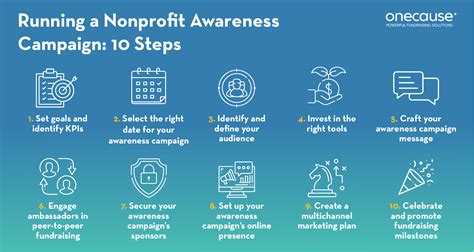Introduction

Birds, avian masters of the skies, play an indispensable role in maintaining the health of our planet. Yet, amidst urbanization, habitat loss, and environmental challenges, their existence is at risk. Bird education and awareness campaigns are crucial in fostering a profound understanding of our feathered friends and empowering us to protect them.
The Imperative of Bird Advocacy
Globally, bird populations face a steep decline. According to the State of the World’s Birds report by BirdLife International, one in eight bird species is threatened with extinction due to habitat loss, climate change, and illegal wildlife trade.
Benefits of Bird Education
Educating the public about birds offers numerous benefits:
- Increased awareness of avian biology, behaviors, and conservation needs
- Foster appreciation for birds and their ecological importance
- Inspire stewardship for bird habitats and conservation efforts
- Reduce human-bird conflicts, minimizing fatalities and injuries
Target Audiences for Education
To maximize the impact of bird education and awareness campaigns, it’s vital to target specific audiences, including:
- Children: Instill a lifelong passion for birds at a young age
- Youth: Empower future conservationists with knowledge and skills
- Adults: Engage the general public to promote responsible actions
- Policymakers: Influence decision-making processes for bird conservation
Innovative Education Approaches
Capitalizing on the power of technology and creativity can enhance the effectiveness of bird education campaigns:
- Virtual Reality (VR): Immersive experiences that transport individuals into bird habitats
- Citizen Science: Empower individuals to contribute to bird research and monitoring
- Interactive Games: Gamify learning to make it enjoyable and engaging
- Social Media: Utilize social media platforms to disseminate bird-related information and inspire action
A Step-by-Step Approach
To launch successful bird education and awareness campaigns, consider the following steps:
- Define Target Audience: Identify the specific groups you want to reach.
- Develop Clear Objectives: Outline the desired outcomes of the campaign, such as increased awareness or behavior change.
- Collaborate with Experts: Engage with ornithologists, conservationists, and other experts to ensure scientific accuracy.
- Create Engaging Content: Utilize various media formats, such as videos, infographics, and interactive games, to make the information accessible and compelling.
- Utilize Existing Platforms: Leverage existing educational platforms, such as schools, libraries, and online resources, to disseminate the campaign message.
- Promote and Disseminate: Utilize social media, press releases, and community events to promote the campaign and reach a wider audience.
- Monitor and Evaluate: Track the campaign’s progress and make adjustments based on feedback and data analysis.
Examples of Successful Campaigns
Numerous bird education and awareness campaigns have achieved remarkable success:
- Cornell Lab of Ornithology’s BirdSleuth: A citizen science program that has engaged over 1 million participants in monitoring bird populations.
- Audubon’s Project Puffin: A conservation effort that has re-established Atlantic Puffin colonies on coastal islands in the US.
- National Bird Day: An annual event celebrated in the US to raise awareness about the importance of birds.
Conclusion
Bird education and awareness campaigns are vital for the future of our feathered friends. By fostering a profound understanding of birds and their ecological significance, we can empower ourselves to protect these avian marvels. With innovation, collaboration, and unwavering dedication, we can elevate bird conservation efforts to 2025 and beyond. Together, let’s soar for the skies and ensure that generations to come can marvel at the wonders of the avian world.
- 1 billion: Estimated number of birds killed annually due to human activities worldwide (BirdLife International)
- 60%: Percentage of bird species that have experienced population declines in recent decades (State of the World’s Birds report)
- 1000: Species of birds considered globally threatened with extinction (IUCN)
- 25%: Proportion of the world’s avian population that has been lost in the past 50 years (Smithsonian Institution)
- 3 billion: Estimated number of birds living in North America (American Bird Conservancy)
Table 1: Bird Education and Awareness Campaign Objectives
| Objective | Description |
|---|---|
| Increase Awareness | Foster a greater understanding of bird biology, behaviors, and conservation status |
| Inspire Conservation | Motivate individuals to protect bird habitats and support conservation efforts |
| Reduce Human-Bird Conflicts | Educate the public about responsible bird feeding practices and other ways to minimize interactions |
| Influence Policy | Raise awareness among policymakers about the importance of bird conservation and advocate for protective measures |
Table 2: Target Audiences for Bird Education Campaigns
| Audience | Education Focus |
|---|---|
| Children | Instill a lifelong passion for birds and conservation |
| Youth | Empower future conservationists with knowledge and skills |
| Adults | Foster appreciation for birds and encourage responsible actions |
| Policymakers | Influence decision-making processes for bird conservation |
Table 3: Innovative Bird Education Approaches
| Approach | Description |
|---|---|
| Virtual Reality | Immersive experiences that transport individuals into bird habitats |
| Citizen Science | Empowering individuals to contribute to bird research and monitoring |
| Interactive Games | Gamifying learning to make it enjoyable and engaging |
| Social Media | Utilizing social media platforms to disseminate bird-related information and inspire action |
Table 4: Benefits of Bird Education
| Benefit | Description |
|---|---|
| Ecological Understanding | Increased knowledge of bird biology, behaviors, and ecological roles |
| Appreciation for Nature | Fostering a greater appreciation for the natural world and its biodiversity |
| Conservation Stewardship | Inspiring individuals to become active stewards for bird habitats and conservation efforts |
| Conflict Reduction | Reducing human-bird conflicts and minimizing fatalities and injuries |
| Educational Enrichment | Enhancing educational experiences for children and youth |





















